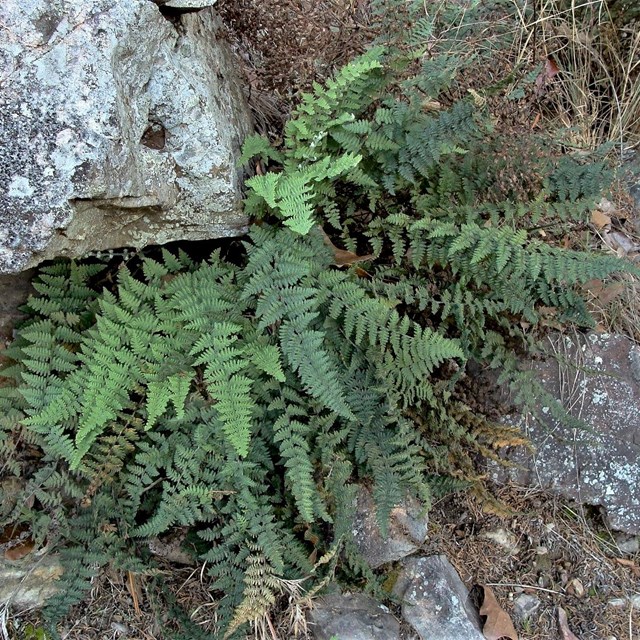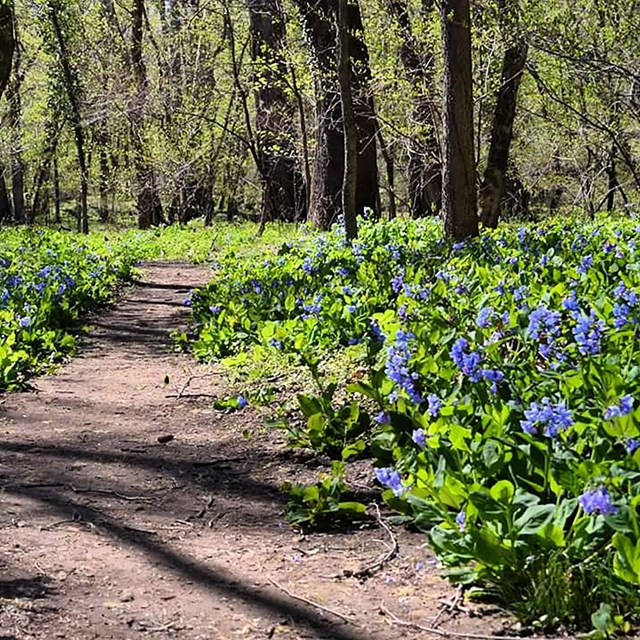Plants are a very important component of the park since approximately 70% of its land is forested. An overview of plant species follows, but note that distinct upland, lowland, and floodplain vegetation communities are present throughout the park.
Numerous fern species including woolly lip fern (Cheilanthes lanosa) and marginal shield fern (Dryopteris marginalis) occur in the park. Grasses, sedges, and rushes also play a valuable role in the plant communities. Tall brome grass (Bromus pubescens) and greenish sedge (Carex virescens) are just a few of the local species. Trees such as chestnut oak (Quercus prinus) and tulip poplar (Liriodendron tulipifera) often dominate the forest canopy; whereas, red maple (Acer rubrum) and hackberry (Celtis occidentalis) are frequently scattered through the understory. Common shrub species in the park include spicebush (Lindera benzoin) and mountain laurel (Kalmia latifolia), while popular wildflowers include Virginia bluebells (Mertensia virginica) and wild columbine (Aquilegia canadensis).




